The tibialis posterior muscle plays a crucial role in foot mechanics and stability. Weakness or injury can lead to pain and dysfunction, often requiring targeted exercises. Strengthening this muscle helps restore arch support, reduce pain, and improve mobility, essential for both rehabilitation and preventive care. These exercises are tailored to address common issues like tendinopathy and flat-foot conditions, promoting long-term foot health.
Understanding the Tibialis Posterior Muscle
The tibialis posterior muscle is a deep calf muscle originating from the tibia and fibula bones in the lower leg. It inserts into the bones of the foot, playing a key role in arch support and foot inversion. This muscle is essential for stability during walking, running, and balance activities. Dysfunction or injury to the tibialis posterior can lead to pain along the inner ankle and foot, often associated with flat-foot conditions or tendinopathy. Understanding its anatomy and function is crucial for effective rehabilitation and prevention of injuries, ensuring proper foot mechanics and overall lower limb health.
Importance of Strengthening the Tibialis Posterior
Strengthening the tibialis posterior is vital for maintaining proper foot mechanics and preventing injuries. Weakness in this muscle can lead to conditions like flat feet, plantar fasciitis, and posterior tibial tendon dysfunction, causing pain and instability. Strengthening exercises improve arch support, enhance balance, and reduce the risk of overuse injuries, particularly in athletes and individuals with active lifestyles. Additionally, a strong tibialis posterior promotes efficient gait mechanics, reducing strain on other muscles and joints. Regular exercises can also aid in rehabilitation, helping to restore function and alleviate symptoms associated with tendon injuries, ensuring optimal lower limb health and mobility.
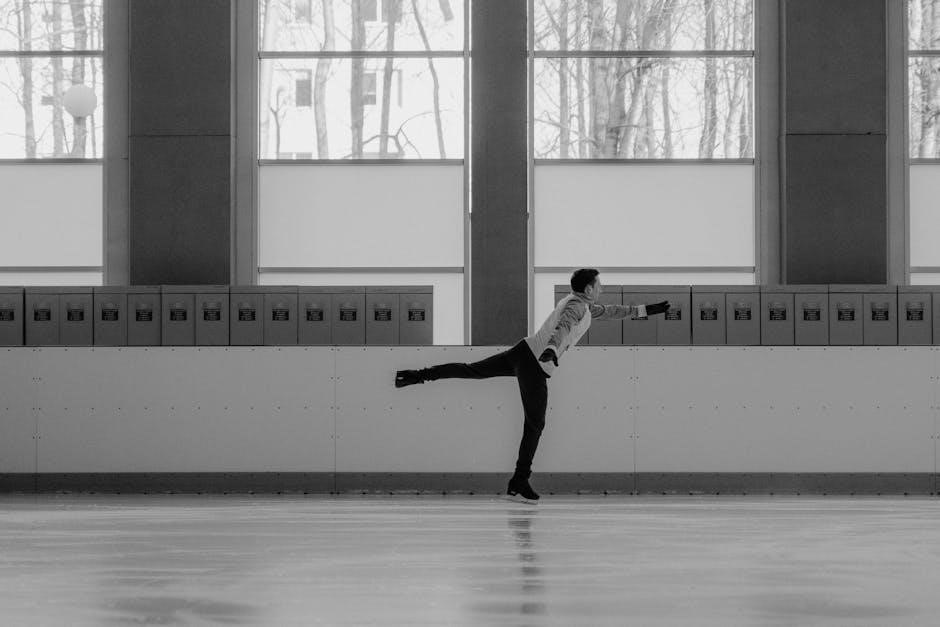
Types of Tibialis Posterior Exercises
Tibialis posterior exercises include heel raises, mobility band stretches, and arch support routines. These exercises target strength, flexibility, and stability, addressing both prevention and rehabilitation needs effectively.
Heel Raises: A Fundamental Exercise
Heel raises are a foundational exercise for strengthening the tibialis posterior muscle. They can be performed while seated or standing, progressing as strength improves. To perform, slowly raise the heels off the ground, holding for a few seconds before lowering. This motion targets the muscle effectively, enhancing arch support and reducing pain. Regular practice helps improve foot stability and is often recommended in rehabilitation programs for conditions like posterior tibial tendon dysfunction. Consistency is key to achieving optimal results and preventing further injury.
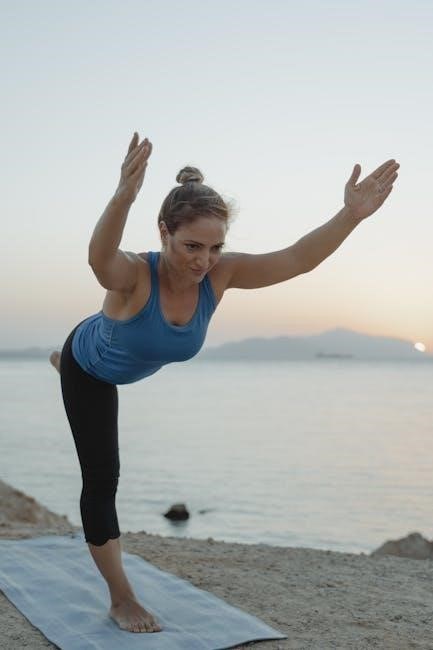
Mobility Bands for Stretching and Strengthening

Mobility bands are a versatile tool for both stretching and strengthening the tibialis posterior muscle. They improve blood flow and promote healing by creating gentle compression. To use, wrap the band around the lower leg with 50-75% stretch. Lean forward, maintaining a good arch, and hold for 20-30 seconds. Repeat 3 times per leg. This exercise reduces muscle tightness and enhances flexibility. Bands like Rogue Fitness VooDoo X and EDGE Mobility are popular choices. They help reset muscle receptors, reducing excessive tightness and promoting recovery. Regular use can prevent degeneration and strengthen the tendon, making them an essential part of a rehabilitation routine.
Arch Support Exercises
Arch support exercises target the tibialis posterior muscle, enhancing its ability to maintain the foot’s natural arch. Stand on one leg, focusing on activating the muscle to lift the arch without curling the toes; Hold for 5-10 seconds, then gradually increase the duration. Perform 3 sets on each leg. This exercise improves stability and reduces overpronation. For advanced versions, incorporate slight heel raises or use resistance bands for added challenge. Strengthening the arch support helps prevent injuries and alleviates symptoms of flat feet, making it a cornerstone in both rehabilitation and preventive care routines for tibialis posterior health.
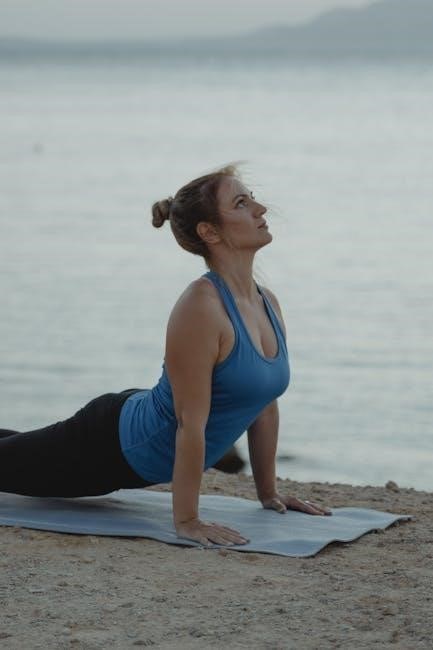
Advanced Exercises for Tibialis Posterior
Advanced exercises include sole-to-sole isometrics and heel raises with resistance. These strengthen the muscle deeply, improving stability and reducing injury risk for those with moderate to severe weakness.
Sole-to-Sole Isometrics
Sole-to-sole isometrics involve pressing both soles of the feet together firmly while keeping the knees apart. This exercise targets the tibialis posterior by engaging the muscle without movement. To perform:
- Sit comfortably with legs straight.
- Place the soles of the feet together.
- Press the soles firmly for 5-10 seconds.
- Repeat 10-15 times, 3 sets daily.
This isometric hold strengthens the muscle, improves arch support, and enhances foot stability, making it ideal for advanced rehabilitation and prevention of dysfunction.
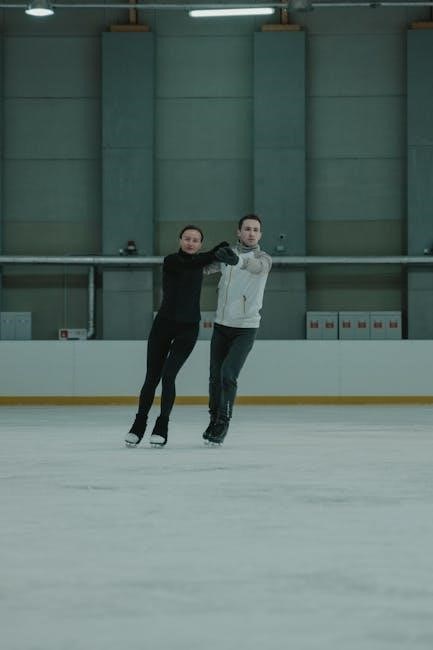
Heel Raises with Resistance
Heel raises with resistance are an advanced exercise targeting the tibialis posterior. To perform:
- Stand with resistance bands or weights attached to your feet.
- Slowly raise your heels off the ground, keeping knees straight.
- Hold for 5 seconds, then lower slowly.
- Aim for 3 sets of 10-15 repetitions.
This exercise enhances muscle strength and stability, particularly beneficial for those with moderate to severe weakness. It improves arch support and reduces the risk of tendon strain, making it a key component in advanced rehabilitation routines.
Rehabilitation and Recovery
Rehabilitation focuses on restoring strength and function, often incorporating the RICE method, orthotics, and supportive footwear. Consistent exercises and proper care are essential for full recovery.
The Role of RICE (Rest, Ice, Compression, Elevation)
The RICE method is a cornerstone in managing tibialis posterior injuries. Rest prevents further strain, while ice reduces inflammation and pain. Compression helps limit swelling, and elevation improves blood flow, accelerating healing. Early application of RICE, combined with exercises, supports effective recovery and minimizes chronic issues.
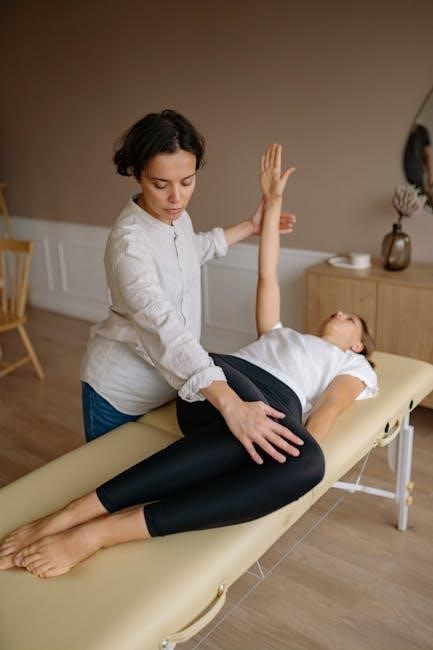
Orthotics and Supportive Footwear
Orthotics and supportive footwear are essential for managing tibialis posterior dysfunction. Custom orthotics can address issues like over-pronation or flat feet, redistributing pressure and alleviating strain on the tendon. Proper footwear with sturdy arch support and cushioning helps maintain foot alignment, reducing discomfort during daily activities. Combining these with strengthening exercises enhances recovery and prevents recurrence. For severe cases, short-leg casts or braces may be recommended to immobilize the foot temporarily. Orthotics and footwear act as protective measures, promoting healing and long-term foot health by providing the necessary structural support.
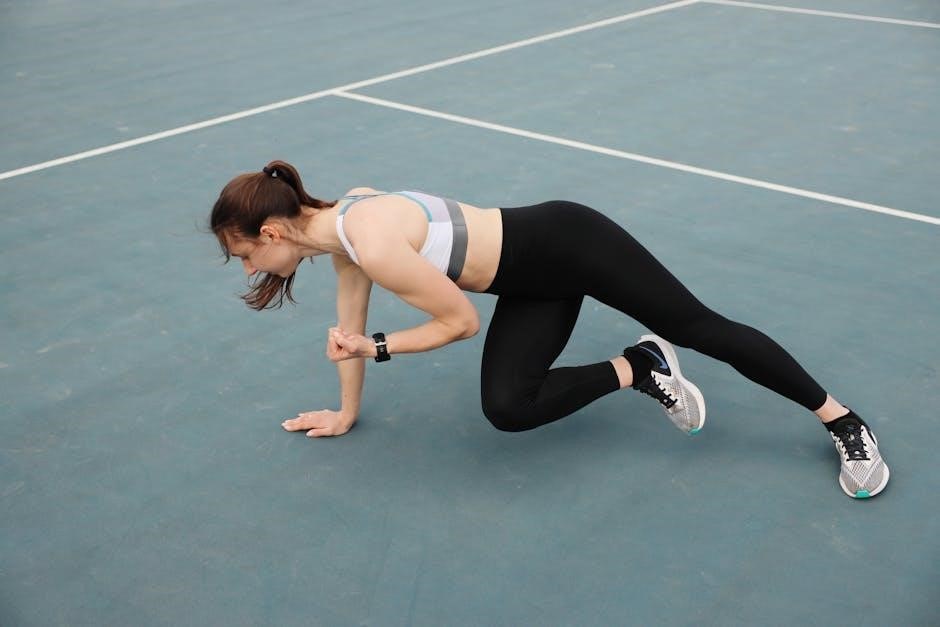
Preventive Measures
Preventing tibialis posterior issues involves avoiding overuse, ensuring proper training techniques, and wearing supportive footwear. Regular monitoring of activity levels and addressing early symptoms can prevent progression.
Footwear Recommendations
Proper footwear is essential for preventing tibialis posterior issues. Choose shoes with strong arch support, cushioning, and a sturdy heel counter to reduce strain on the tendon. Avoid flat or unsupportive shoes, as they can exacerbate overpronation. Orthotics or shoe inserts can provide additional stability, especially for individuals with flat feet. Replace worn-out footwear regularly to maintain adequate support. When engaging in physical activities, opt for athletic shoes designed for your specific sport or workout. Poorly fitting or unsupportive footwear can lead to overuse injuries, making preventive measures critical for long-term foot health and muscle function.
Avoiding Overuse and Training Errors
Overuse and improper training techniques are common causes of tibialis posterior injuries. Gradually increase activity intensity and duration to avoid sudden strain. Ensure proper warm-up and cool-down routines to prepare and relax the muscles. Avoid repetitive stress on the tendon, especially in activities like running or hiking. Incorporate rest days and cross-training to reduce overuse risk. Poor biomechanics, such as overpronation, can exacerbate strain, so consider gait analysis or consulting a professional. Listen to your body and stop if pain occurs, as early intervention prevents chronic issues and supports long-term tendon health.
Consistent practice of tibialis posterior exercises is vital for maintaining foot stability and preventing dysfunction. These exercises promote strength, flexibility, and proper biomechanics, enhancing overall lower limb function and reducing injury risk.
The primary exercises for the tibialis posterior include heel raises, mobility band stretches, and arch support exercises. Heel raises strengthen the muscle by lifting the heel off the ground, either seated or standing. Mobility bands enhance flexibility and blood flow, aiding recovery. Arch support exercises, like standing on one leg, improve balance and stability. Advanced techniques such as sole-to-sole isometrics and heel raises with resistance further build strength. Progressing from basic to advanced exercises ensures gradual muscle development. These exercises are essential for addressing tendinopathy, flat feet, and chronic pain, promoting overall foot health and functionality. Consistency is key to achieving lasting benefits.
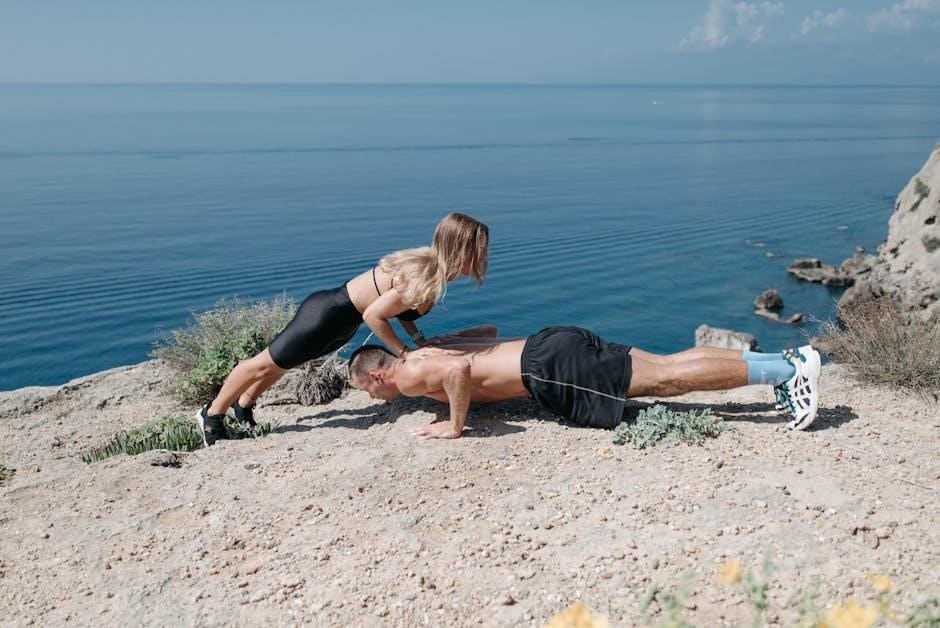
Importance of Consistency in Exercise Routine
Consistency is vital for effective tibialis posterior rehabilitation and strength-building. Regular exercises ensure gradual muscle adaptation, preventing overuse and promoting healing. Irregular workouts may lead to relapses or prolonged recovery. Even moderate, daily efforts yield better results than sporadic intense sessions. Over time, consistent practice enhances muscle endurance, improving foot mechanics and reducing injury risk. It also fosters sustainable progress, crucial for long-term foot health and overall physical stability. Sticking to a structured routine is essential for achieving and maintaining the benefits of tibialis posterior exercises, ensuring optimal functionality and minimizing discomfort in daily activities and sports performance.
Comments